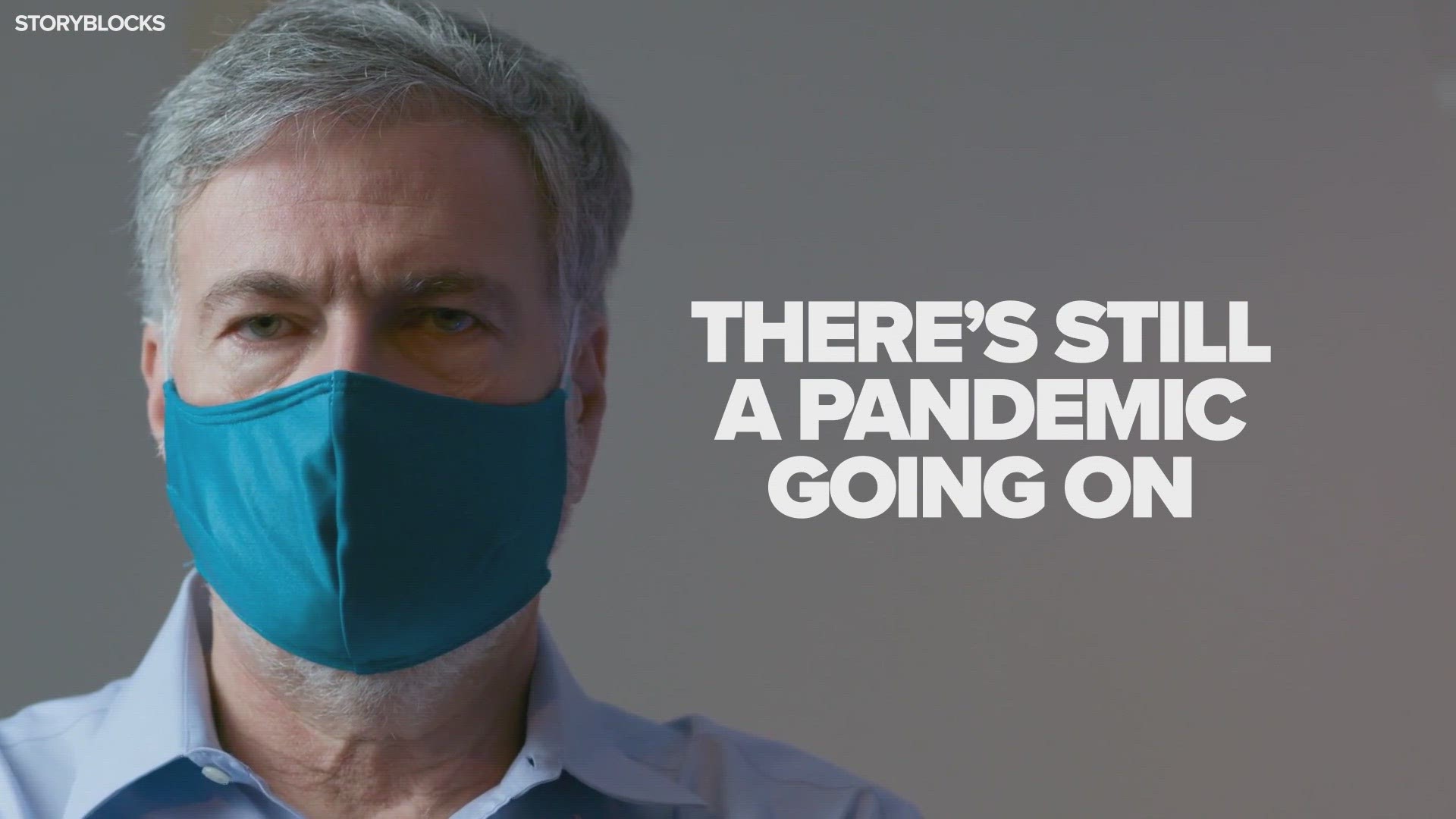DES MOINES, Iowa — The final White House Coronavirus Task Force report from the Trump administration summarizes what the world has learned about the novel coronavirus and the gaps states need to fill to bring the pandemic to a halt.
The latest report from Jan. 17, obtained by ABC News, says Iowa is still in the red zone for cases, indicating 101 new cases per 100,000 people from Jan. 9-15.
Iowa has the 38th highest rate of new cases in the country.
Iowa reported 290 cases per 100,000 people, compared to the national average of 478 cases per 100,000 people.
The state is still in the red zone for test positivity, meaning 10.1% or more tests come back positive. Iowa has the 25th highest rate of test positivity in the country.
Officials say 96% of Iowa's 99 counties are experiencing moderate or high levels of community transmission. High levels of community transmission are happening in 70% of counties.
The report says Iowa, however, has seen a decrease in cases and test positivity.
From Jan. 4-10, the White House report says 15% of nursing homes reported at least one new resident positive and 33% reported one new staff positive. The report says 10% reported at least one new resident death in that time.
While hospitalizations have dipped to pre-November surge levels, the report says, on average, 77 patients with confirmed COVID-19 and 42 patients with suspected COVID-19 were reported as newly admitted each day between Jan. 9-15.
The report says this is a 7% increase in total new COVID-19 hospital admissions.
RELATED: White House task force: Iowa needs 'aggressive mitigation' as COVID-19 continues into winter months
What experts learned about COVID-19
The last report from the Trump administration urges states to remain vigilant when it comes to COVID-19.
"Even though cases are declining, pandemic levels are high and hospital admissions have ticked up," the report says. "To get ahead of a significant rise in hospitalizations, focus on finding asymptomatic individuals through testing those under 40, including university students."
The current surge is 3x bigger than spring, summer
Rapid community spread during the fall and winter surge "will need to be continuously met with aggressive and escalating mitigation," the report says.
"We should not be reassured that we don't yet have significant spread from imported, more transmissible variants as early evidence may underestimate the current spread," the report says. "We are likely to have our own, more transmissible variants, and our mitigation actions should reflect this potential reality."
The report advises people to "act as though we have more transmissible strains circulating."
The current surge has been three times longer than the spring and summer surge, and "significantly more deadly."
"Although case fatality rates have declined for Americans identified with COVID-19 infections in those over 70, nearly 20% are hospitalized and nearly 10% succumb to this virus," the report says.
Officials have noticed evidence of early stabilization of community spread, but there are still "very high rates of transmission." The report says they've also noticed plateauing rates of new COVID-19 hospital admissions in parts of the United States.
However, the report warns "aggressive mitigation must continue to prevent a resurgence and to accelerate declines."
COVID-19 can be mitigated, but action needs to be taken
The report says the virus can be mitigated and community spread can be "curtailed," but mitigation efforts need to stay strong to avoid increases in hospitalizations.
Mitigation efforts need to last longer than they did in the summer, the report says.
"Due to the significant asymptomatic contribution to community spread, the degree of underlying community infection is extensive by the time hospitalizations occur," the report says.
Granular data matters
Data on test positivity rates, hospitalizations and deaths in real-time need to be used for immediate action. The report says finding specific areas of active community spread and "intensifying actions" in those locations works.
Mask mandates work
Wearing a mask reduces the risk of transmitting COVID-19, and enforcing their use is needed as well.
The report says ensuring "effective behavioral change of masking" requires constant reminders. Working with retailers to enforce mask-wearing helps with this.
Personal gatherings put people at risk of contracting COVID-19
Indoor gatherings with non-household members are "key viral spreading events," according to the report.
The report says indoor masking is essential in helping mitigate the spread.
Proactive testing and treatment work
Being tested early means COVID-19 positive individuals are able to access the care they need quickly. Finding asymptomatic, silent infections is critical to find potential hotspots of COVID activity.
Access to monoclonal antibodies as a treatment is associated "with a significant decline in the rate of hospitalizations and fatalities," according to the report.
The report says every hospital and physician "must directly provide infusion clinics or know where to link patients" to receive treatment.
Proactive vaccination of those most vulnerable is critical
"Strick tiering and traditional models of vaccination are hindering access to and the impact of vaccination," the report says.
Officials recommend vaccinating those most vulnerable, creating mass vaccination sites and ensuring access to the vaccine for rural and urban vulnerable populations.
Aggressive immunization of Tribal Nations and multigenerational households across the United States is "essential," according to the report.
Read the full report on Iowa below

